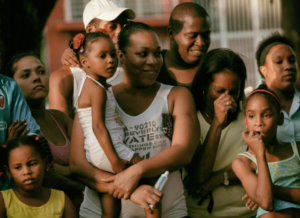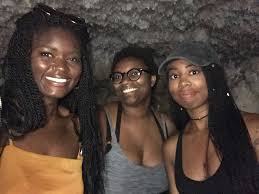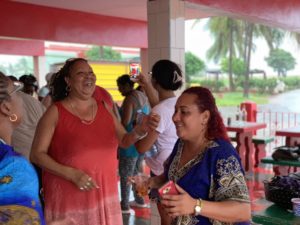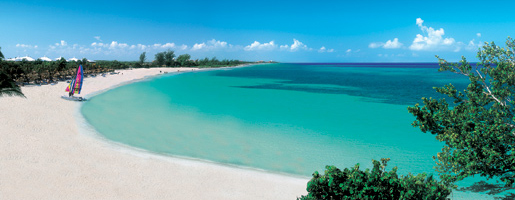 CUBANERIAS: “EL QUE NO TIENE DE CONGO TIENE DE CARABALÍ!”. VIDEOS.
CUBANERIAS: “EL QUE NO TIENE DE CONGO TIENE DE CARABALÍ!”. VIDEOS.
Desde finales del siglo XVI hasta principios del XVII, se considera la etapa de introducción de negros procedentes de África en Cuba, desde que en 1517, el rey Carlos I de España, firma el permiso que autoriza el cruel proceso.
Cuba fue una de las primeras colonias a donde llegaron los esclavos africanos, para utilizarlos como fuerza de trabajo de remplazo por la temprana extinción de la población indígena a manos de los colonizadores españoles.
Al naciente país vinieron Mandingas, Yolofes, Fulaces; Gangaes, Longobáes, Maní, Quisí, Minas, Lucumíes y Suamos, así como Bibí, Brícamos, Motembos, Musundis, Mombasas, Sacuaes, Congos y Carabalíes, entre otras etnias africanas.
La contribución de esas naciones y tribus en la formación de nuestro pueblo y de su cultura es decisiva, a partir de la mezcla de esos hombres y mujeres con el tronco creado por ibéricos, castellanos, andaluces, gallegos, catalanes y vascos.
Estos a su vez se juntaron con taínos y ciboneyes, originales habitantes de la mayor isla de las Antillas y después con yucatecos, chinos y otros muchos emigrantes, y así surgió la unidad popular para forjar una nueva nación.
“Y TU ABUELA DONDE ESTA?”
En Cuba se dice al que trata de ocultar sus descendencia “aquí el que no tiene de congo, tiene de carabalí”, en una expresión bien justificada si tenemos en cuenta las raíces africanas de la actual nacionalidad cubana.
Los congos eran fuertes, muy corpulentos, benbones y de pura pasa, mientras los carabalíes que llegaron de más al sur casi pegados a donde hoy es Sudáfrica, tenia finas facciones, de cuerpos esbeltos y de andar elegante y altanero.
Ambos pueblos alcanzaron predominio casi absoluto en el país y la frase en cuestión, de profundo arraigo popular, quiere decir que todos en Cuba o casi todos tienen algo de negro en sus familias, o bien de Congo o de Carabalí.
 CUBANERIAS: “THE ONE WHO DOES NOT HAVE OF CONGO HAS OF CARABALÍ!”. VIDEOS.
CUBANERIAS: “THE ONE WHO DOES NOT HAVE OF CONGO HAS OF CARABALÍ!”. VIDEOS.
From the end of the sixteenth century to the beginning of the seventeenth, it is considered the stage of introduction of blacks from Africa into Cuba, since in 1517, King Carlos I of Spain, signed the permit authorizing the cruel process.
Cuba was one of the first colonies where African slaves arrived, to be used as a replacement labor force due to the early extinction of the indigenous population at the hands of the Spanish colonizers.
To the nascent country came Mandingas, Yolofes, Fulaces; Gangaes, Longobáes, Maní, Quisí, Minas, Lucumíes and Suamos, as well as Bibí, Brícamos, Motembos, Musundis, Mombasas, Sacuaes, Congos and Carabalíes, among other African ethnic groups.
The contribution of these nations and tribes in the formation of our people and their culture is decisive, based on the mixture of these men and women with the trunk created by Iberians, Castilians, Andalusians, Galicians, Catalans, and Basques.
These in turn joined with the Taínos and Ciboneyes, original inhabitants of the largest island in the Antilles and later with Yucatecans, Chinese, and many other emigrants, and thus the popular unity arose to forge a new nation.
In Cuba, those who try to hide their descendants are said “here who does not have a Congo, has a carabalí”, in a well-justified expression if we take into account the African roots of the current Cuban nationality.
“AND WHERE IS YOUR GRANDMOTHER?”
The Congolese were strong, very corpulent, benbones, and pure raisins, while the carabali that came from further south, almost glued to where South Africa is today, had fine features, slender bodies, and an elegant and haughty gait.
Both peoples reached almost absolute predominance in the country and the phrase in question, deeply rooted in the popular, means that everyone in Cuba or almost everyone has something black in their families, either from the Congo or from Carabalí.
Agencies/ Arrajatabla/ Alberto Denys/ Internet Photos/ YouTube/ Arnoldo Varona/ www.TheCubanHistory.com
THE CUBAN HISTORY, HOLLYWOOD.








